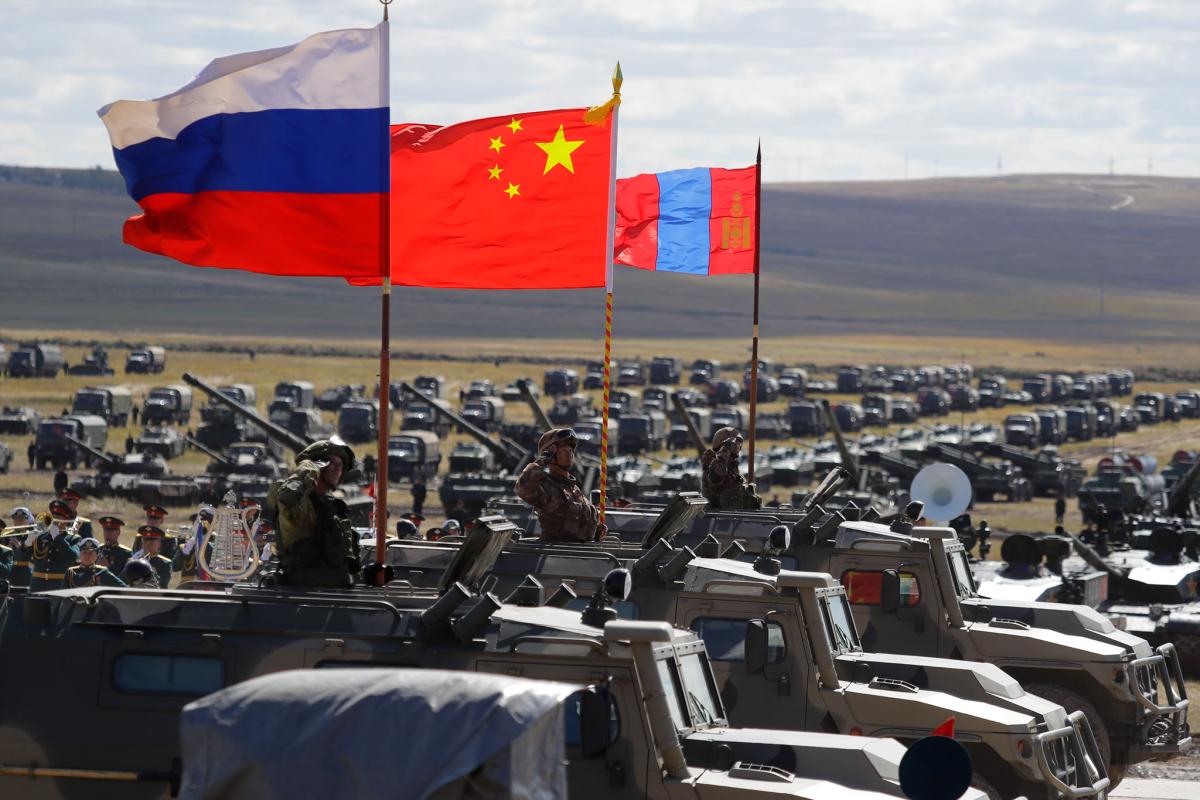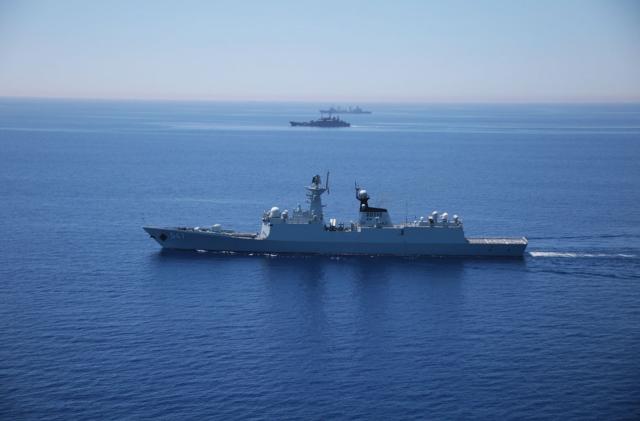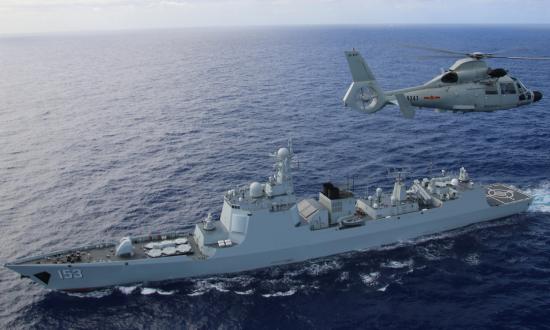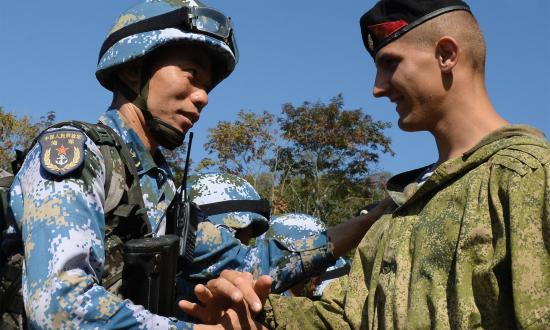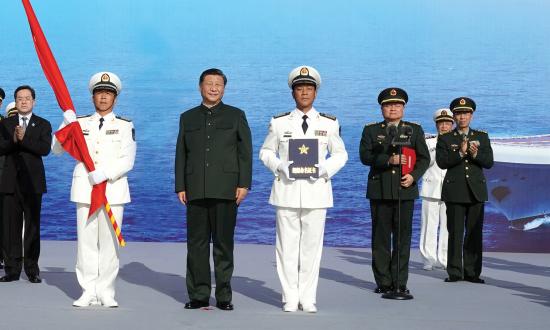Driven by “reduced bilateral military tensions, overlapping external security conditions, converging leadership perceptions, and harmonious defense economic conditions,” Beijing and Moscow have prioritized strengthening their military-to-military relationship.Under the leadership of General Secretary of the Chinese Communist Party (CCP) Xi Jinping and President of the Russian Federation Vladimir Putin, Sino-Russian defense ties have matured to the point that some analysts claim the relationship constitutes a “de-facto military alliance.”
The bilateral defense relationship primarily manifests itself across three broad areas of engagement; high-level military contacts, military-technical cooperation, and joint military exercises. Of the three categories, exercises are arguably the most important. In 2015, Russian Defense Minister Sergei Shoigu said as much: “The most important issue of the Russian-Chinese military cooperation are the joint military exercises.” Joint military exercises contribute to China and Russia’s security partnership in three ways, according to the Congressional testimony of Richard Weiss in 2019. First, they help Beijing and Moscow’s armed forces improve their tactical and operational capabilities and increase their interoperability, enhancing their ability to conduct joint operations. Second, the exercises serve a mutual reassurance function, affirming China and Russia’s “commitment to military cooperation as an important dimension of their evolving relationship.” Third, joint military exercises signal to third parties—particularly the United States—China and Russia’s strong commitment to each other’s security interests.
China and Russia held their first joint military exercise in 2003 and have conducted more than 30 since. During that time, the frequency, complexity, and geographic scope has steadily increased, reflecting the growth in the overall bilateral defense relationship.
“Joint Sea” Exercises
Since 2012, China and Russia have held an annual bilateral naval exercise known as “Joint Sea,” which “provides a forum for the Russian and Chinese navies to engage in a wide range of joint activities.” Joint Sea has been an effective vehicle for the Chinese and Russian militaries to improve tactical and operational capabilities, conduct joint operations, and increase interoperability.
The Joint Sea exercise series has increased in complexity and interoperability in recent years. The first Joint Sea, held in the Yellow Sea in April 2012, consisted of relatively unsophisticated antisubmarine warfare (ASW) operations and simulated rescues of hijacked vessels. By contrast, during Joint Sea 2016, the Chinese and Russian navies conducted drills to seize and control islands and reefs for the first time, plus other amphibious, air defense, ASW, and search-and-rescue operations. The two navies also used a unique command information system for the first time in 2016. During Joint Sea 2019, they conducted a live-fire air defense exercise,which involved launching surface-to-air missiles against cruise missile targets.
background during "Joint Sea" Exercise 2015. (Credit: Sputnik)
The exercises are particularly important for China’s People’s Liberation Army Navy (PLAN), which has not fought a war in decades. Joint Sea allows the PLAN to learn from the more experienced Russian Navy, which possesses a lead in important areas, including mine warfare, submarine operations, and conducting long-range attacks at sea with land-based bombers. Furthermore, the exercises provide an opportunity for the PLAN to integrate new classes of warships into fleet operations, such as the Type 052D and Type 055 destroyers.
The effectiveness of the Joint Sea exercises is constrained by their limited scope and duration as well as a minimal emphasis on interoperability. Paul Schwartz highlights that that “On average, a Joint Sea exercise lasts around seven days, which is significantly shorter than the typical U.S./allied naval exercise. Joint Sea exercises also tend to be smaller than their U.S./allied counterparts.” The exercises also suffer from a limited emphasis on interoperability. For example, while the joint command information system China and Russia developed for Joint Sea 2016 demonstrated “improved efficiency and coordination compared to previous exercises . . . the system could only exchange radar and sonar data, a far less sophisticated arrangement than the data link systems the U.S. military uses with NATO.” Schwartz asserts that, “Due to the limited emphasis on interoperability, the program has done little to prepare the two navies to conduct joint naval operations against a real-world adversary.”
Where the Joint Sea exercises have arguably been most successful is in signaling China and Russia’s growing geopolitical partnership and increasingly aligned security interests. Recent Joint Sea exercises have been held in controversial locations, including the Baltic, Mediterranean, and South China seas, reflecting Beijing and Moscow’s respective support for each other’s key security priorities. Joint Sea 2015, held in the Mediterranean—an area long considered to be NATO-friendly waters—was heralded as a “geopolitical game changer” because of the exercise’s provocative location. Similarly, Joint Sea 2017 was held in the Baltic Sea, a region where Russian aggression had caused significant consternation for NATO. Robert Sutter notes that China’s participation signaled Beijing’s willingness to support Russia’s security interests even at the expense of other Chinese interests. Testifying before the U.S.-China Economic and Security Review Commission, Sutter said that Beijing participated in these exercises “even though China has strong interests in keeping on good terms with those regional governments unnerved by Moscow’s shows of force.”
Russia has also used Joint Sea to signal its support for Chinese security interests. Joint Sea 2016, held in the South China Sea, signaled Moscow’s support for China’s territorial claims in the region.
Expanding Multilateral Sino-Russian Naval Exercises
In 2019, China and Russia conducted their first tri-lateral naval exercises with South Africa and Iran. From 24 to 30 November 2019, China, Russia, and South Africa held a maritime exercise, dubbed “Mosi”, off South Africa’s coast. The exercise, which marked the first time the People’s Liberation Army Navy (PLAN) had operated off the Southern tip of Africa, focused on “ensuring navigational security” and included “surface gunnery exercises, cross-deck helicopter landings, boarding operations, anti-piracy drills and disaster control exercises.” Rear Admiral Liu Zongcheng of the PLAN said the exercise would allow the three countries to “boost the pragmatic cooperation level and joint operation capability of the three navies, and fully demonstrate their determination to jointly cope with maritime threats and challenges, safeguard world peace and maritime security, and build the ‘maritime community’ with a shared future.” The PLAN sent the Type 054A guided missile frigate Weifang to participate, while Russia sent the Marshal Ustinov, a Slava-class cruiser, accompanied by the Vyaz’ma, a Kaliningradneft-class medium seagoing tanker, and SB-406, a seagoing tug. South African frigate SAS Amatola, the lead ship of the Valour-class frigates, and SAS Protea, a Hecla-class survey and auxiliary vessel, participated in the exercise.
The following month, China and Russia held a joint naval exercise with Iran in the Gulf of Oman and Indian Ocean dubbed “Maritime Security Belt.” The exercise, held from 27 to 30 December 2019, rehearsed “curbing terrorism threats, carrying out rescue operations and defending against attacks from pirates.”Maritime Security Belt was held during a time of heightened tensions between the United States and Iran, and signaled China and Russia’s support for Iran against U.S. interests in the region.Reinforcing the exercises’ signaling purpose, Iranian Second Rear Admiral Gholamreza Tahani said, “The joint drills also serve as a signal to the world that relations between Tehran, Moscow, and Beijing have reached a ‘meaningful’ level.”
Options for the United States
Looking forward, it is likely that Sino-Russian defense ties will continue to deepen in the near future. Because China and Russia’s growing defense ties are driven largely by common interest in opposing the United States and its allies, any punitive measures taken by the United States to curb them are likely to tie Beijing and Moscow’s navies closer together.
Despite increased frequency, scope, and complexity, however, China and Russia’s military exercises have yet to demonstrate an ability to conduct a major joint military operation. Richard Weitz, director of the Center for Politico-Military Analysis at the Hudson Institute, observes that “China and Russia lack the interoperability or integrated command, control, and support mechanisms required to conduct an effective combined military campaign.”
To counter this growing alliance, the United States must strengthen its own defense ties with allies and partners. The U.S. global network of alliances and partnerships is a unique strength Washington can leverage to enhance international security. Chad Sbragia, Deputy Assistant Secretary of Defense for China, recently reinforced the key role U.S. allies play in maintaining regional security, testifying before the U.S.–China Economic and Security Review Commission: “Our treaty allies remain a key asymmetric advantage vis-à-vis China in the Indo-Pacific region. They are integral to upholding the free and open order through . . . combined training, exercises, and operations.” The United States must emphasize naval exercises with its partners and allies to build interoperability and test future warfighting concepts.
As the military partnership between Beijing and Moscow continues to expand and deepen, the United States and its allies and partners must strengthen their mutual defense relationships as part of inter-theater deterrence. The size, scope, and complexity of international military exercises is one way to measure the level of trust and respect nations have for each other—and the growth of Chinese–Russian military exercises shows that Presidents Vladimir Putin and Xi Xinping increasingly consider themselves partners if not allies.



